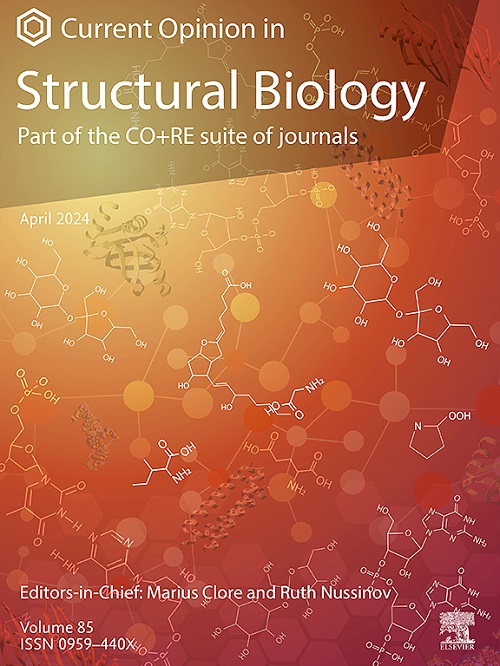In-cell chromatin structure by Cryo-FIB and Cryo-ET
IF 6.1
2区 生物学
Q1 BIOCHEMISTRY & MOLECULAR BIOLOGY
引用次数: 0
Abstract
Chromatin, the complex of DNA and proteins that organises genetic material in eukaryotic cells, has been a focal point of biological research for over a century. Its structure determines critical functions such as gene regulation, DNA replication and chromosome segregation. Early models of chromatin were limited by technological constraints, but advancements in imaging, particularly X-ray and electron microscopy (EM), gradually unveiled its hierarchical organisation. The recent emergence of cryo-electron tomography (cryo-ET) coupled with cryo-focused ion beam (cryo-FIB) milling has revolutionised our understanding of chromatin organisation by providing native, three-dimensional (3D) views of various macromolecules and architectures of chromatin at unprecedented resolution. This review traces the historical progression of chromatin structural studies, from early EM and fluorescence microscopy to the transformative insights offered by cryo-ET, culminating in a synthesis of current knowledge and future directions.
通过Cryo-FIB和Cryo-ET分析细胞内染色质结构
染色质是真核细胞中构成遗传物质的DNA和蛋白质的复合体,一个多世纪以来一直是生物学研究的焦点。它的结构决定了基因调控、DNA复制和染色体分离等关键功能。早期的染色质模型受到技术限制,但成像技术的进步,特别是x射线和电子显微镜(EM),逐渐揭示了它的分层组织。最近出现的低温电子断层扫描(cryo-ET)与低温聚焦离子束(cryo-FIB)铣磨结合,以前所未有的分辨率提供了各种大分子和染色质结构的原生三维(3D)视图,彻底改变了我们对染色质组织的理解。本文回顾了染色质结构研究的历史进展,从早期的EM和荧光显微镜到cryo-ET提供的变革性见解,最终综合了当前的知识和未来的方向。
本文章由计算机程序翻译,如有差异,请以英文原文为准。
求助全文
约1分钟内获得全文
求助全文
来源期刊

Current opinion in structural biology
生物-生化与分子生物学
CiteScore
12.20
自引率
2.90%
发文量
179
审稿时长
6-12 weeks
期刊介绍:
Current Opinion in Structural Biology (COSB) aims to stimulate scientifically grounded, interdisciplinary, multi-scale debate and exchange of ideas. It contains polished, concise and timely reviews and opinions, with particular emphasis on those articles published in the past two years. In addition to describing recent trends, the authors are encouraged to give their subjective opinion of the topics discussed.
In COSB, we help the reader by providing in a systematic manner:
1. The views of experts on current advances in their field in a clear and readable form.
2. Evaluations of the most interesting papers, annotated by experts, from the great wealth of original publications.
[...]
The subject of Structural Biology is divided into twelve themed sections, each of which is reviewed once a year. Each issue contains two sections, and the amount of space devoted to each section is related to its importance.
-Folding and Binding-
Nucleic acids and their protein complexes-
Macromolecular Machines-
Theory and Simulation-
Sequences and Topology-
New constructs and expression of proteins-
Membranes-
Engineering and Design-
Carbohydrate-protein interactions and glycosylation-
Biophysical and molecular biological methods-
Multi-protein assemblies in signalling-
Catalysis and Regulation
 求助内容:
求助内容: 应助结果提醒方式:
应助结果提醒方式:


